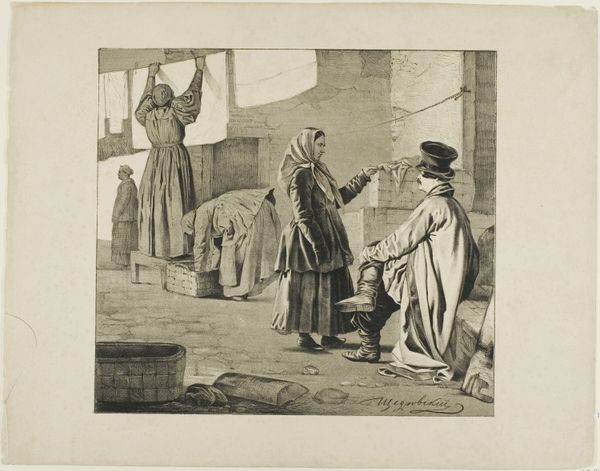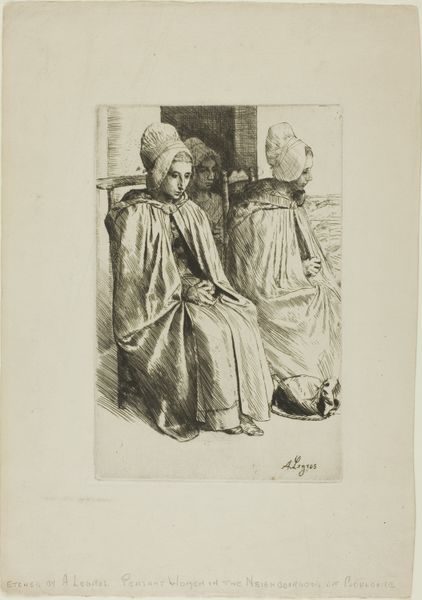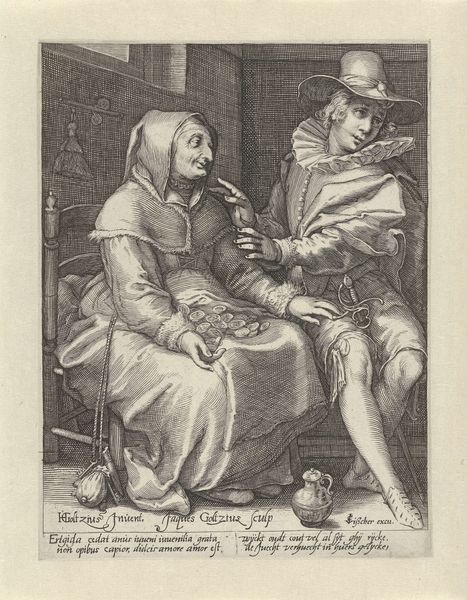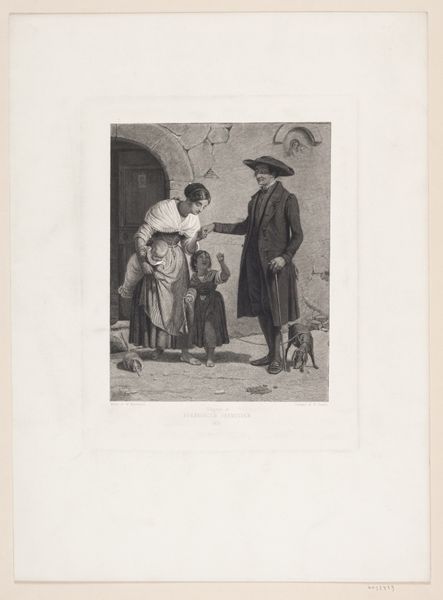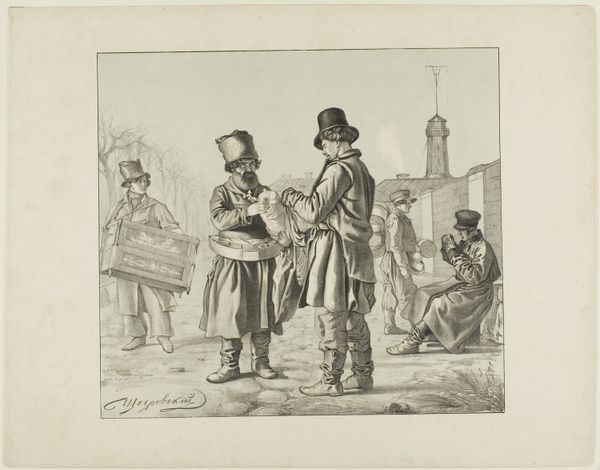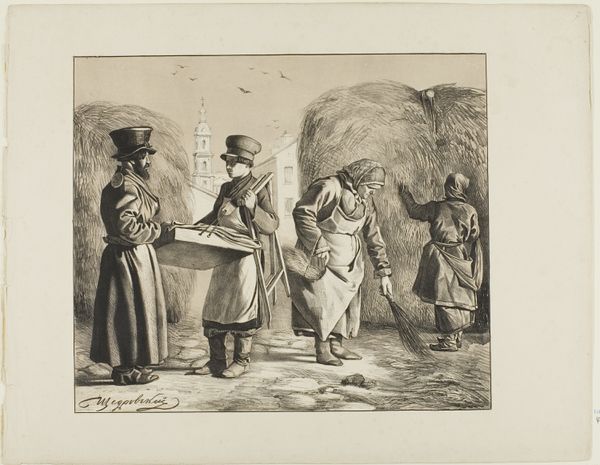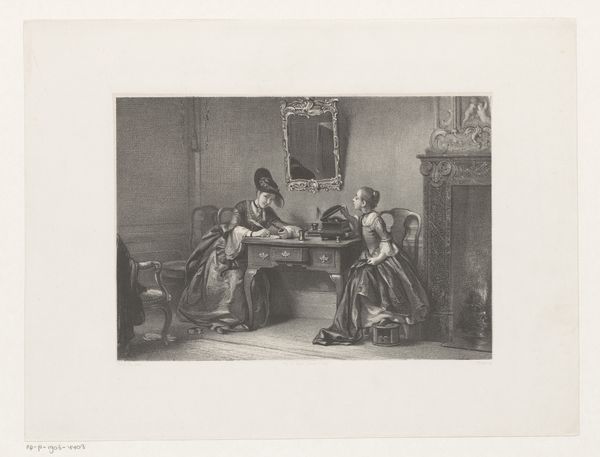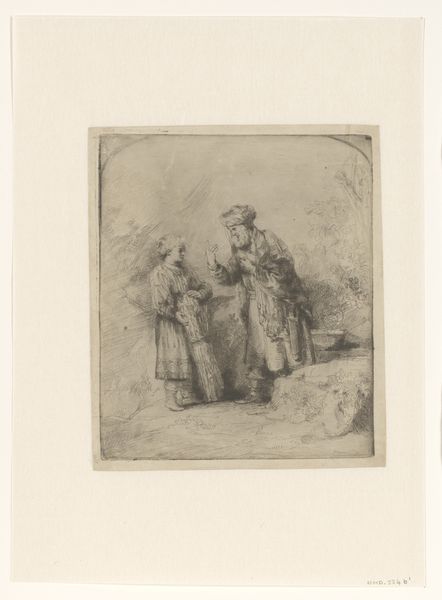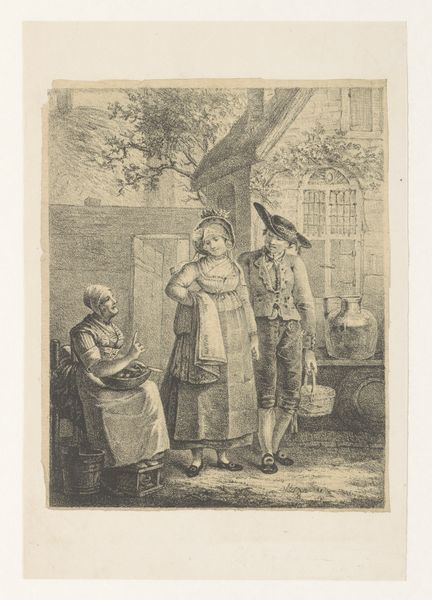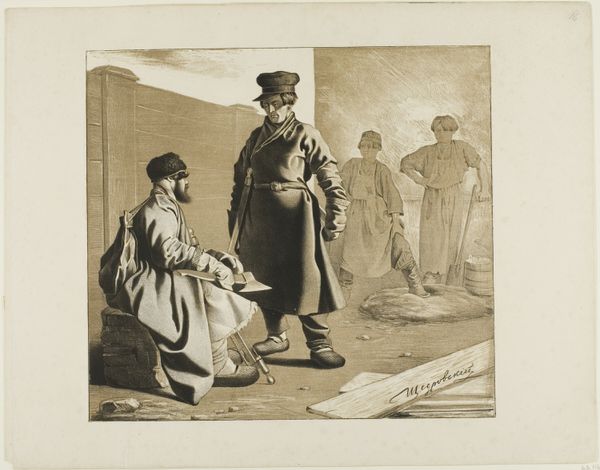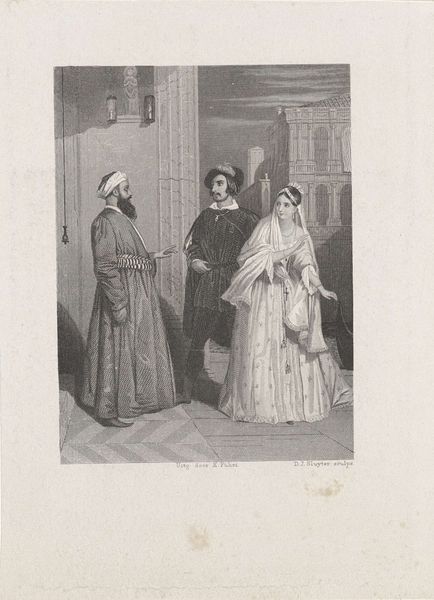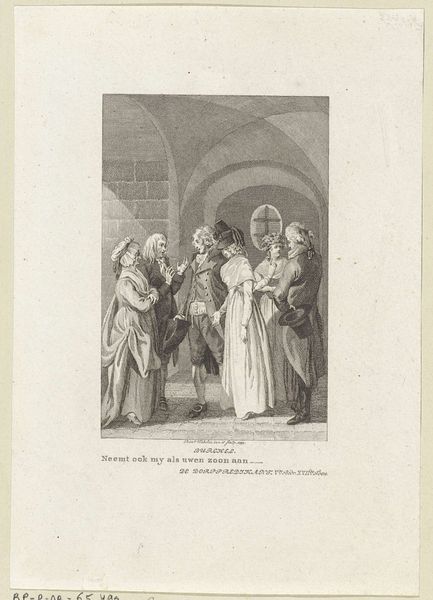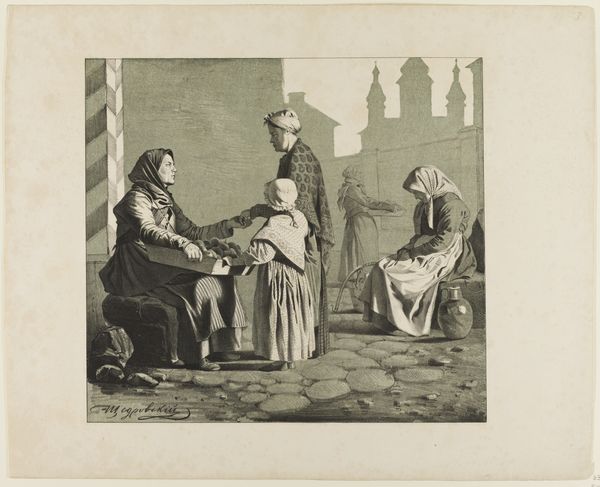
drawing, lithograph, print, paper
#
portrait
#
drawing
#
lithograph
# print
#
paper
#
russian-avant-garde
#
watercolour illustration
#
genre-painting
#
realism
Copyright: Public Domain
Curator: What strikes me immediately is the weightiness of these figures, cloaked in dense blacks and greys. Editor: I agree. And that sense of somber weight permeates Ignatii Stepanovich Shchedrovskii’s lithograph titled "Scenes from Russian Folk Life" presented in tones that evoke introspection more than outward action. The exact date of creation is currently unknown. Curator: Let's consider it's a lithograph, a printmaking process where the image is drawn on a stone or metal plate. The marks left behind signify a huge shift in reproducible imagery. Look at how meticulously he has detailed each texture; from the fabric folds to the man’s fur hat and coat. What was it like for Shchedrovskii, crafting this window onto Russian life for consumption? Editor: Good question. Situated as we are now, and noting the social stratification implicit in the image - a merchant, perhaps a monastic figure, and what looks to be a vendor--it's difficult not to wonder about Shchedrovskii's intent. To what extent was his artwork created to serve and reinforce Tsarist authority by aestheticizing divisions, and how did that intersect with his status in 19th-century Russia? Curator: His realistic style also seems to point toward making the ordinary accessible, yet it’s framed by the printing processes available at the time which would shape its accessibility differently for different groups. Mass reproducibility also affects consumption—did this artwork reinforce social positions through its very existence as an image meant to be replicated and viewed? Editor: Certainly. Consider too the setting—is it symbolic? The backdrop, while roughly sketched, hints at some urban architectural facade which contrasts starkly with what appear to be deliberately emphasized faces to explore those physiognomic elements deemed stereotypically “Russian.” This invokes debates on the gaze itself within power structures shaping racialized narratives during the period Curator: Absolutely. I see it too—how this artistic approach presents the act of seeing, and the materials and mode of production give way to complex discussions around class, labor, and representation. Editor: These details are pivotal. They ground the piece historically while allowing for open reflection about visual language within broader cultural contexts related specifically toward constructions on identity politics that defined imperial Russia—it really leaves much for pondering even today!
Comments
No comments
Be the first to comment and join the conversation on the ultimate creative platform.
